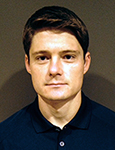Leaning Low-to-Medium-Volume High-Level Assembly Processes

Bringing efficiency to manufacturing of one-off projects.
Low-to-medium-volume high-level assembly (HLA) projects are often the most inefficient projects in electronics manufacturing services (EMS). While the work cell areas may be efficiently arranged for actual assembly operations, HLA projects are normally built in tucked away areas where there is space for a project that may not be built every day. There isn’t a huge of amount of optimization effort beyond initial setup because the payback on a single project typically doesn’t justify it. And, since these projects are added infrequently, often as an additional requirement from a customer with higher volume work, they are often set up in whatever space is available when the need arises.
While individually there may not be much value in Lean principles applied on a case-by-case basis, collectively there are number of benefits. SigmaTron’s Elk Grove Village, IL, facility felt that defining a specific space could help optimize workflow and production resource utilization. The result was a centralized HLA work area for these types of projects that incorporates several core Lean principles, including the following:
Optimize production aids to minimize defects. While each work cell is optimized for the product to be built, all workstations are equipped with flat panel display monitors that provide interactive work instructions, allowing the production operator to view an assembly video, magnify assembly visual aids or search for specific information. This ensures each operator has the detailed information needed to correctly assemble the product, even when production occurs in small batches once or twice a month.
Minimize wait time, overproduction or excess inventory. While these are considered separate wastes, the dynamics of isolated work cells often create all three. This is due to the fact that an isolated work cell with small work team and fluctuating demand may slow down or overproduce to keep staff working in periods of slow demand. This generates excess work-in-process and/or finished goods inventory. In the new work area, the work team is cross-trained and moves among work cells as demand varies. This removes the incentive to slow the pace of work to stretch out production activities. It also discourages overproduction since excess work-in-process is immediately visible.
Worker cross-training has the additional benefit of job enlargement and enrichment, which breaks monotony and helps contribute to defect minimization. A final benefit is minimization of repetitive stress injuries since moving among work cells to build different products minimizes repetitive motion.
In SigmaTron’s case, excess inventory is further minimized through a systems strategy. Product is barcoded and tracked through each operation using the company’s proprietary iScore system. Real-time production status can be accessed internally via computer monitors, and customers can access production status remotely via the iScore portal.
Minimize unnecessary motion. Another factor in remote work cells is they often utilize excess production resources such as older workbenches or may face space constraints from clutter that can develop in orphan projects over time. This can create situations where workers must move product around inefficiently due to inefficient workbench placement, or aren’t in the best position for the assembly operation being performed. The new HLA area is designed with ergonomics in mind and each work cell optimized for the specific operation. Workers can sit or stand, as needed. The centralized location also makes it easy to reinforce 5S disciplines.
Minimize unnecessary transport and handling. When HLA projects are scattered around a factory, it means support functions have to transport raw material to multiple locations and subassemblies, or finished goods are also transported from multiple locations. In the centralized HLA work area, PCBAs and other required components are stocked at point of use, minimizing transport time and enabling stockroom personnel to easily see when a Kanban needs to be replenished. There is similar efficiency in test, pack and ship operations.
In the Elk Grove Village facility, centralizing HLA production has been a win-win. Production operators are empowered and trained to a higher level of skill. This adds responsibility and variety to their jobs. The team is achieving economies-of-scale in production resource utilization by clustering HLA activities in a single work space. From a customer standpoint, the efficiencies are helping to provide a cost-competitive, responsive solution for projects that don’t make sense to move offshore.
is vice president of operations at Sigmatron International in Elk Grove Village, IL (sigmatronintl.com); jim.barnes@sigmatronintl.com.
Press Releases
- Altus Reports Growing Demand for Guidance on Convection Reflow Oven Specification
- Coherix Opens New Adhesive-Dispensing Vision Center in Europe
- Pan Pacific Strategic Electronics Symposium Program Finalized
- The Most Critical 2 Inches in SMT Manufacturing – When a Splice Fails, the Line Fails, Full Stop. Throughput and Yield Depend on One Overlooked Moment







